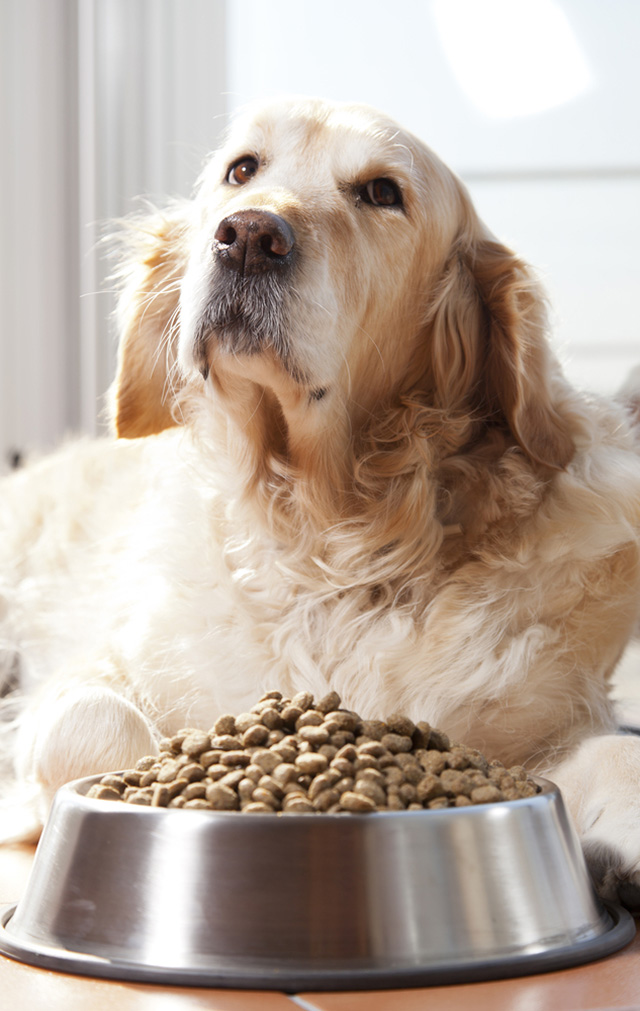Diabetes mellitus is a disease in which your dog’s pancreas can no longer produce enough of the hormone insulin.
It is estimated that approximately one in 500 dogs and cats in the UK develop the disease.
Middle aged to older dogs are more prone to developing the condition and un-spayed bitches are most commonly affected, however certain dog breeds including Australian Terriers, Bichon Frises, Cairn Terriers, Fox Terriers, Golden Retrievers, German Shepherds, Keeshonden, Poodles (toy, miniature and standard), Pugs, Samoyeds and Schnauzers (both miniature and standard) are at increased risk.

What does insulin do?
Every time your dog eats a meal, glucose is absorbed from the intestines and enters the bloodstream. Glucose (sugar) is the essential fuel of the body’s cells and is needed for these cells to work and so for the body to function. At the same time, insulin is released by your dog’s pancreas.
Insulin allows the glucose to leave the bloodstream and enter cells (e.g. liver, kidney, and muscle cells) where it can be used for energy and growth. Think of insulin as a key that unlocks a door to let glucose into the cells. Insulin lowers blood glucose and allows it to enter cells, where it is used to produce energy.
What happens in dogs without enough insulin?
In diabetic dogs, the pancreas can no longer produce enough insulin (type 1 diabetes). Without insulin, glucose is no longer able to leave the bloodstream to be used as energy by the body’s cells and the glucose in the blood will rise to an abnormally high level.
The level will become so high that glucose overflows into the urine and your dog’s urine will contain glucose.
The body’s cells cannot utilise the glucose they depend upon for energy. In order to compensate for this, other ‘abnormal’ energy producing processes start-up which do not depend on glucose (such as fat break-down).
Unfortunately, these processes eventually create toxic by-products that can make your dog very sick.
What are the symptoms of diabetes in dogs?
Contact your vet if you have any concerns about your dog.
Signs to look for are:
- increased thirst
- frequent urination
- changes in appetite
- weight loss
- deteriorating coat condition
- lethargy or lack of energy

Can canine diabetes be treated?
Your vet will discuss treatment options depending on the extent of the diabetes. This could include dietary changes as well as considering insulin injections to replace the insulin that your dog’s pancreas can no longer produce.
A good quality of life can be restored for the majority of diabetic pets given insulin treatment and appropriate care.
For further information on diabetes, simply phone your vet to book a pet health check or visit www.diabeticpets.co.uk

